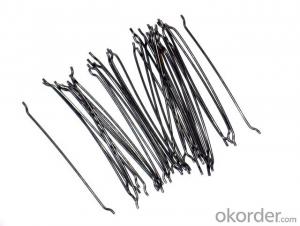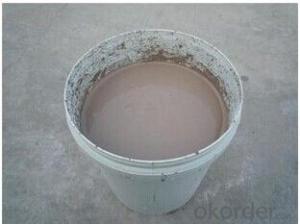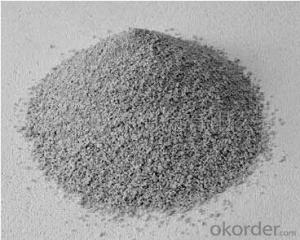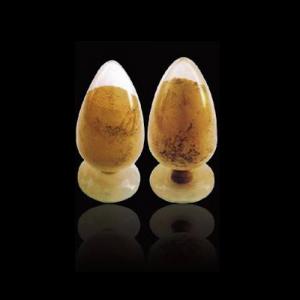refractory magnesia carbon taphole bricks for BOF
- Loading Port:
- Shanghai
- Payment Terms:
- TT OR LC
- Min Order Qty:
- 10 set
- Supply Capability:
- 50000 set/month
OKorder Service Pledge
OKorder Financial Service
You Might Also Like
refractory Magnesia carbon taphole bricks for bof
Application unique channel for Pouring steel water from converter
or EAF to ladle
Raw material 99% Large crystal bone material, 599 flake graphite as
binder CaB6 the additive
performance Convenient for changing and construct
Eliminate the steel water leaking from tap hole , improve the safe
ratio apparently
deduct the oxidizing secondly for the steel water
raise the quality of the steel water
much longer service life
( 200 times on converter continue working 25 hours)
Perfect thermal shock ability ,can resist the extreme cold
and hot
Dense structure ,high resistance for washing and erosion
excellent resistance for oxidizing slag and spalling
high refractoriness
Wonderful sinter ability, and adhesion
Specification:
specification | Item | Number |
Chemical | MgO | ≥78% |
C | ≥12% | |
physical | CCS | ≥30MPa |
AP | ≤ 5% | |
BD | ≥2.9g/cm3 | |
Refractoriness | 1500°C-1600°C |
Our Services
Construction To install
Packaging & Shipping
Packing inside: plastic bag
outside: wood carton for sea worthy
FAQ
Store under the room temperature.
for half a year
Pay attention to To be dry ,no hitting
- Q:How do monolithic refractories contribute to the overall efficiency of iron and steel production?
- Monolithic refractories play a crucial role in enhancing the overall efficiency of iron and steel production. These refractories, which are made from a single material, provide exceptional thermal insulation, resistance to high temperatures, and excellent mechanical strength. By lining the furnaces, ladles, and other equipment used in the production process, monolithic refractories help in maintaining and regulating the required high temperatures for melting, refining, and shaping iron and steel. This insulation reduces heat loss, minimizes energy consumption, and ensures a more efficient and cost-effective production process. Additionally, the mechanical strength of monolithic refractories allows for better protection against wear and tear, resulting in increased equipment lifespan and reduced downtime for repairs and maintenance. Overall, the use of monolithic refractories significantly contributes to the efficiency, productivity, and sustainability of the iron and steel production industry.
- Q:What are the challenges faced in the application of monolithic refractories?
- The application of monolithic refractories presents several challenges. Firstly, a major hurdle is the correct installation of these refractories. Unlike traditional brick refractories that can be easily stacked, specialized skills and techniques are required for the proper application of monolithic refractories. The consistency and workability of the refractory material must be carefully controlled, and specialized equipment such as gunning machines or vibrating tools are often necessary for the installation process. Another challenge lies in selecting the appropriate monolithic refractory material for a specific application. There are various types of monolithic refractories available, each with its own unique properties and suitability for different environments. Choosing the wrong type of refractory material can lead to premature failure and expensive repairs. Therefore, it is crucial to understand the operating conditions, including temperature, chemical exposure, and mechanical stress, in order to select the most suitable monolithic refractory material. Additionally, monolithic refractories are prone to thermal shock and erosion due to their composition and method of application. They are typically made from fine powders that are mixed with water or other binding agents to form a paste. This paste is then applied and dried to create a solid refractory lining. However, during the heating and cooling cycles, monolithic refractories can experience thermal expansion and contraction, resulting in cracks and spalling. Furthermore, chemical reactions occurring in certain industrial processes can cause chemical attack and erosion of the refractory lining, reducing its lifespan. Furthermore, the maintenance and repair of monolithic refractories can also pose a challenge. Unlike brick refractories that can be easily replaced, repairing monolithic refractories often requires skilled personnel and specialized techniques. The damaged area must be removed, and a new layer of refractory material must be applied, ensuring proper bonding and compatibility with the existing lining. This process can be time-consuming and costly, especially in high-temperature applications where extended downtime can result in significant production losses. In conclusion, the application of monolithic refractories presents challenges in terms of proper installation techniques, material selection, susceptibility to thermal shock and erosion, and complex maintenance and repair procedures. Overcoming these challenges requires expertise, careful planning, and a comprehensive understanding of the specific operating conditions and requirements for each application.
- Q:How are monolithic refractories used in the iron and steel industry?
- Due to their exceptional performance and versatility, monolithic refractories are widely utilized in various applications within the iron and steel industry. Composed of a uniform material, these refractories serve as seamless linings in high-temperature environments. In the iron and steel industry, the significance of monolithic refractories cannot be overstated as they play a crucial role in multiple stages of the manufacturing process. A primary application is seen in the blast furnace, where the inside of the furnace is lined with monolithic refractories. This lining is exposed to exceedingly high temperatures and harsh chemical reactions. By providing excellent thermal insulation and resistance to chemical attack, monolithic refractories ensure the durability and longevity of the blast furnace. Another crucial application is witnessed in the steelmaking process, where monolithic refractories are used to line the ladles and tundish, utilized for transporting and pouring molten steel. These refractories are specially designed to withstand the corrosive nature and high temperatures of the molten steel, thus preventing contamination and guaranteeing the quality of the final product. Furthermore, monolithic refractories find application in various ancillary equipment and structures within the iron and steel industry. They are employed in furnaces, kilns, and other heat treatment systems to provide insulation and maintain high-temperature conditions. Additionally, they are used in the construction of chimneys, exhaust ducts, and other exhaust systems, where they offer thermal insulation and resistance against corrosive gases. Overall, the vital role played by monolithic refractories in the iron and steel industry lies in their ability to provide high-temperature insulation, chemical resistance, and durability. They optimize the production process, enhance energy efficiency, and ensure the quality of the final product. With their exceptional performance and versatility, monolithic refractories have become an indispensable component within the iron and steel manufacturing industry.
- Q:How do monolithic refractories protect lining in ladles and tundishes?
- Monolithic refractories play a crucial role in protecting the lining in ladles and tundishes through their unique properties and characteristics. These refractories are composed of a single, solid piece, as opposed to traditional brick or tile linings, which consist of individual units. One of the key ways in which monolithic refractories protect the lining is through their high density and low porosity. This property ensures that the refractory material acts as an effective barrier against the penetration of molten metal and slag. By preventing the infiltration of these corrosive substances, the monolithic refractory shields the lining from chemical attack, ensuring its longevity and performance. Additionally, monolithic refractories have excellent thermal shock resistance. Ladles and tundishes are subjected to extreme temperature fluctuations during the steelmaking process, as molten metal is poured and then allowed to cool. The ability of monolithic refractories to withstand these rapid temperature changes without cracking or spalling is vital in protecting the lining from thermal damage. Furthermore, monolithic refractories offer superior strength and mechanical properties. Ladles and tundishes are subjected to various mechanical stresses, such as the weight of the molten metal, the movement of the refractory lining during pouring, and the impact of scrap or additives. The robustness of monolithic refractories allows them to withstand these forces, preventing any structural failure or damage to the lining. Another advantage of monolithic refractories is their ease of installation. Unlike brick or tile linings, which require meticulous jointing and careful placement, monolithic refractories can be applied as a single, cohesive layer. This seamless application ensures a uniform protective barrier, eliminating weak points or gaps that could compromise the lining's integrity. In summary, monolithic refractories protect the lining in ladles and tundishes by providing a dense, impermeable barrier against the penetration of molten metal and slag. Their thermal shock resistance, mechanical strength, and easy installation contribute to the overall durability and longevity of the lining, ensuring its effective performance in the demanding steelmaking environment.
- Q:How do monolithic refractories contribute to the safety of iron and steel operations?
- Monolithic refractories play a crucial role in enhancing the safety of iron and steel operations. These refractories are made of a single, continuous material, which offers several benefits that contribute to the overall safety of the operations. Firstly, monolithic refractories provide excellent thermal insulation. They are designed to withstand high temperatures, preventing heat transfer to the surrounding environment. This insulation property helps in maintaining a safe working temperature for the operators, reducing the risk of burns or other heat-related injuries. Furthermore, monolithic refractories have high resistance to chemical attack. In iron and steel operations, various chemicals and molten metals are used, which can be corrosive and hazardous. The use of monolithic refractories as lining materials creates a protective barrier that resists the corrosive effects of these substances, preventing leaks and potential accidents. Another safety benefit is the ability of monolithic refractories to withstand mechanical stress. Steelmaking processes involve heavy machinery and equipment, which can exert significant pressure on the refractory linings. Monolithic refractories have excellent mechanical strength, which enables them to withstand these stresses and maintain their integrity. This prevents the risk of sudden failure or collapse, reducing the possibility of accidents and injuries due to falling debris. Additionally, monolithic refractories offer easy installation and repair. They can be applied as a castable or gunning material, allowing for quick and efficient lining of furnaces, ladles, and other equipment. This ease of installation reduces downtime during maintenance or repairs, minimizing the risk of accidents caused by delayed or prolonged shutdowns. In summary, monolithic refractories contribute to the safety of iron and steel operations through their excellent thermal insulation, resistance to chemical attack, ability to withstand mechanical stress, and ease of installation and repair. By providing a protective barrier, these refractories help in preventing injuries, maintaining a safe working environment, and minimizing the potential hazards associated with high temperatures, corrosive substances, and mechanical failures.
- Q:How are monolithic refractories recycled or disposed of at the end of their lifespan?
- Monolithic refractories, which are commonly used in high-temperature industrial applications, can be recycled or disposed of at the end of their lifespan through several methods. The chosen method depends on the specific type of monolithic refractory and its composition. One common approach to recycling monolithic refractories is through a process known as reclamation. Reclamation involves collecting used refractory materials and processing them to remove any impurities or contaminants. The reclaimed refractory material can then be crushed, ground, or milled to produce a fine powder that can be used as a raw material in the production of new refractories. Another method of recycling monolithic refractories is through thermal treatment. This involves subjecting the used refractory material to high temperatures in a controlled environment, such as a kiln or furnace. The heat helps to break down the refractory material, removing any binders or impurities. The resulting material can then be reused as a raw material or incorporated into other applications, such as aggregates for construction. In cases where recycling is not feasible, monolithic refractories can be disposed of in specialized facilities designed for handling and treating hazardous waste. These facilities ensure that the refractory material is properly contained and treated to minimize any potential environmental impact. This disposal method is typically used for refractories that contain hazardous substances or cannot be recycled due to their composition. It is important to note that the proper disposal or recycling method for monolithic refractories should comply with local regulations and guidelines. These regulations aim to ensure the safe handling, treatment, and disposal of these materials, taking into consideration their potential environmental and health impacts. Therefore, it is crucial for industries and businesses to work closely with waste management professionals and follow the appropriate procedures to responsibly manage monolithic refractories at the end of their lifespan.
- Q:What are the factors influencing the choice of monolithic refractories for different furnace types?
- The choice of monolithic refractories for different furnace types is influenced by various factors that need to be considered in order to ensure optimal performance and efficiency. These factors include the operating temperature, type of heat transfer mechanism, chemical composition of the furnace atmosphere, thermal cycling, mechanical stresses, and specific application requirements. One of the primary factors to consider is the operating temperature of the furnace. Different monolithic refractories have different temperature limits, and it is crucial to select a refractory material that can withstand the specific temperature range of the furnace without significant degradation or failure. For high-temperature applications, materials like alumina, magnesia, and silica are commonly used due to their excellent thermal stability. The type of heat transfer mechanism is another important consideration. Furnaces can use various methods to transfer heat, such as radiation, conduction, or convection. Each of these mechanisms may require different refractory properties. For example, radiation-dominated furnaces may require a refractory material with high thermal conductivity to efficiently transfer heat, while convection-dominated furnaces may require a material with good resistance to gas flow erosion. The chemical composition of the furnace atmosphere is also a crucial factor. Depending on the process being carried out in the furnace, the atmosphere may contain highly corrosive gases or chemicals. In such cases, it is essential to select a monolithic refractory that is resistant to chemical attack and can maintain its structural integrity in the presence of aggressive substances. Thermal cycling, which involves repeated heating and cooling cycles, is another factor influencing the choice of monolithic refractories. Some refractory materials may be prone to thermal shock or spalling when subjected to rapid temperature changes. In contrast, others may have better resistance to thermal cycling, making them more suitable for applications that involve frequent temperature variations. Mechanical stresses, such as load or vibration, can also impact the choice of refractories. Furnaces that experience mechanical stresses require materials with good mechanical strength and resistance to abrasion. Refractory materials like silicon carbide or zirconia may be preferred in such cases due to their high strength and toughness. Lastly, specific application requirements should be considered when selecting monolithic refractories. Factors such as installation method, ease of maintenance, availability, and cost-effectiveness may influence the choice of refractory material. In summary, the choice of monolithic refractories for different furnace types is influenced by the operating temperature, heat transfer mechanism, chemical composition of the furnace atmosphere, thermal cycling, mechanical stresses, and specific application requirements. Considering these factors is essential to ensure the longevity, performance, and efficiency of the refractory lining in various furnace applications.
- Q:How do monolithic refractories contribute to the reduction of heat loss in ladles and tundishes?
- Monolithic refractories contribute to the reduction of heat loss in ladles and tundishes by providing a continuous and seamless lining that minimizes thermal bridging and heat transfer. Unlike traditional brick refractories, monolithic refractories eliminate joints and gaps, preventing heat from escaping through these openings. Additionally, their high thermal conductivity and insulation properties ensure efficient heat containment within the ladles and tundishes, reducing energy loss and improving overall thermal performance.
- Q:How do monolithic refractories improve the efficiency of ladle and tundish preheating stations?
- Crucial for enhancing the efficiency of ladle and tundish preheating stations, monolithic refractories are specifically designed to withstand high temperatures and thermal shocks, making them an ideal choice for preheating applications. One significant way in which monolithic refractories enhance efficiency is by offering excellent heat insulation. With low thermal conductivity, these refractories minimize heat loss from the preheating station to the surroundings. Consequently, the ladle or tundish preheating station retains more heat, resulting in faster and more efficient vessel heating. Furthermore, monolithic refractories possess outstanding heat retention properties. Once heated, these refractories can gradually store and release heat over time. This characteristic ensures a consistent and controlled heating process in the ladle or tundish preheating station. By maintaining a stable temperature, the refractories guarantee uniform vessel heating and prevent thermal shocks that could cause cracking or other damage. Moreover, monolithic refractories exhibit excellent resistance to chemical reactions and erosion caused by molten metals and slag. Ladles and tundishes frequently encounter corrosive environments, and the use of monolithic refractories protects against degradation and extends the lifespan of the preheating station. This durability reduces the need for frequent maintenance and replacement, resulting in cost savings and improved overall efficiency. To summarize, monolithic refractories enhance the efficiency of ladle and tundish preheating stations by providing exceptional heat insulation, heat retention, and resistance to chemical reactions. These properties lead to faster and more uniform heating, reduced heat loss, and increased preheating station durability. Ultimately, these advantages contribute to improved productivity and cost-effectiveness in the steelmaking process.
- Q:How do monolithic refractories perform in reheating furnace roof applications?
- Monolithic refractories are highly effective in reheating furnace roof applications. These refractories are known for their excellent thermal shock resistance, which is crucial in the extreme temperature conditions inside a reheating furnace. They can withstand rapid temperature changes without cracking or spalling, ensuring the longevity and durability of the furnace roof. Additionally, monolithic refractories offer superior insulation properties, which help in maintaining the desired temperature inside the furnace. These refractories have low thermal conductivity, preventing heat loss and reducing energy consumption. This not only improves the energy efficiency of the furnace but also contributes to cost savings for the operators. Furthermore, monolithic refractories provide excellent resistance to chemical attacks from gases and molten metals present in the furnace environment. They are designed to withstand corrosive atmospheres and prevent the penetration of harmful substances, thus prolonging the life of the roof refractory. Moreover, monolithic refractories offer easy installation and repair options. Their ability to be cast or gunned in place allows for a seamless and precise application to the roof structure. This feature also enables quick and efficient repairs or maintenance, minimizing downtime and production losses. In conclusion, monolithic refractories are a reliable and efficient choice for reheating furnace roof applications. Their exceptional thermal shock resistance, insulation properties, chemical resistance, and ease of installation make them an ideal solution for maintaining the structural integrity and performance of the furnace roof.
1. Manufacturer Overview |
|
|---|---|
| Location | |
| Year Established | |
| Annual Output Value | |
| Main Markets | |
| Company Certifications | |
2. Manufacturer Certificates |
|
|---|---|
| a) Certification Name | |
| Range | |
| Reference | |
| Validity Period | |
3. Manufacturer Capability |
|
|---|---|
| a)Trade Capacity | |
| Nearest Port | |
| Export Percentage | |
| No.of Employees in Trade Department | |
| Language Spoken: | |
| b)Factory Information | |
| Factory Size: | |
| No. of Production Lines | |
| Contract Manufacturing | |
| Product Price Range | |
Send your message to us
refractory magnesia carbon taphole bricks for BOF
- Loading Port:
- Shanghai
- Payment Terms:
- TT OR LC
- Min Order Qty:
- 10 set
- Supply Capability:
- 50000 set/month
OKorder Service Pledge
OKorder Financial Service
Similar products
New products
Hot products
Hot Searches
Related keywords





























